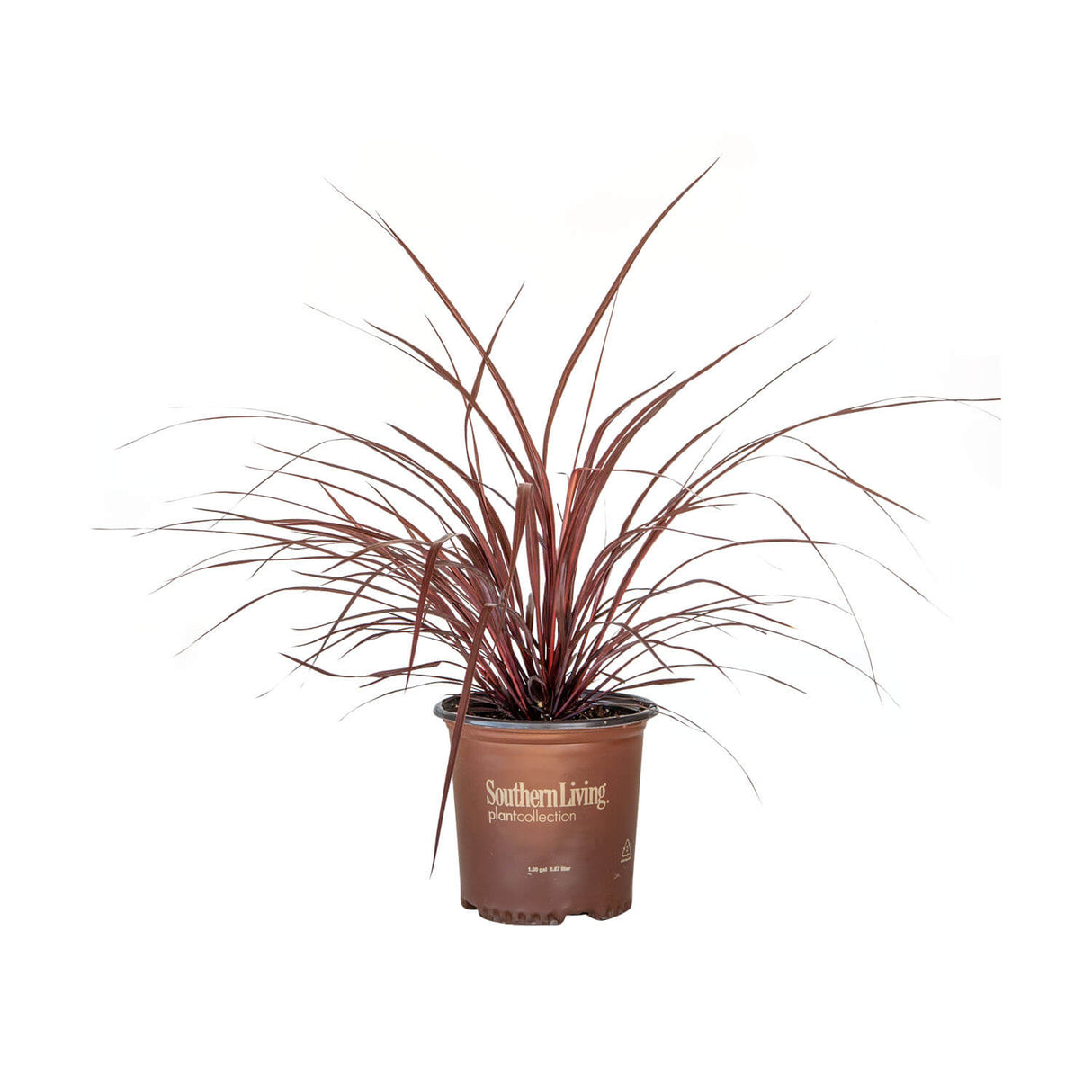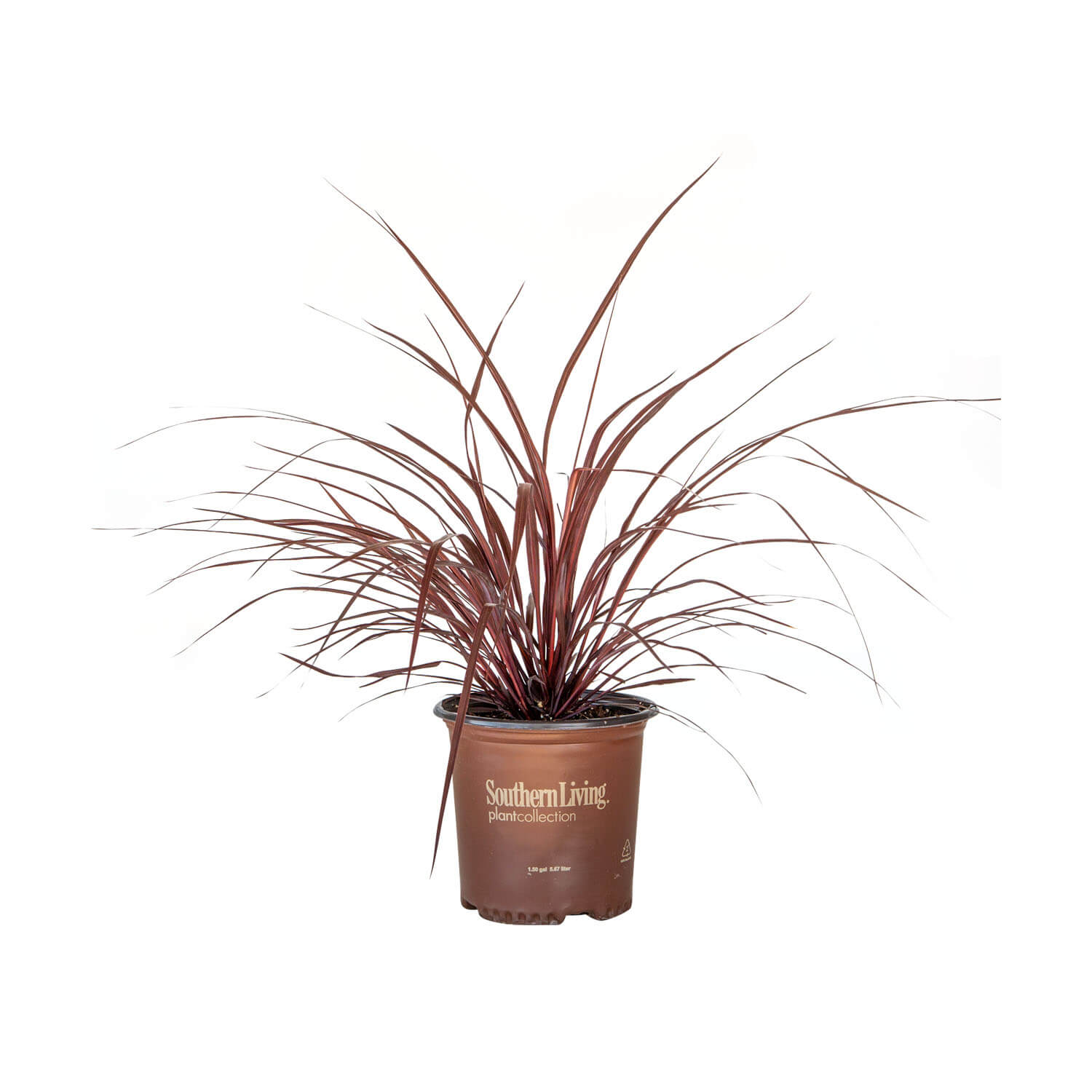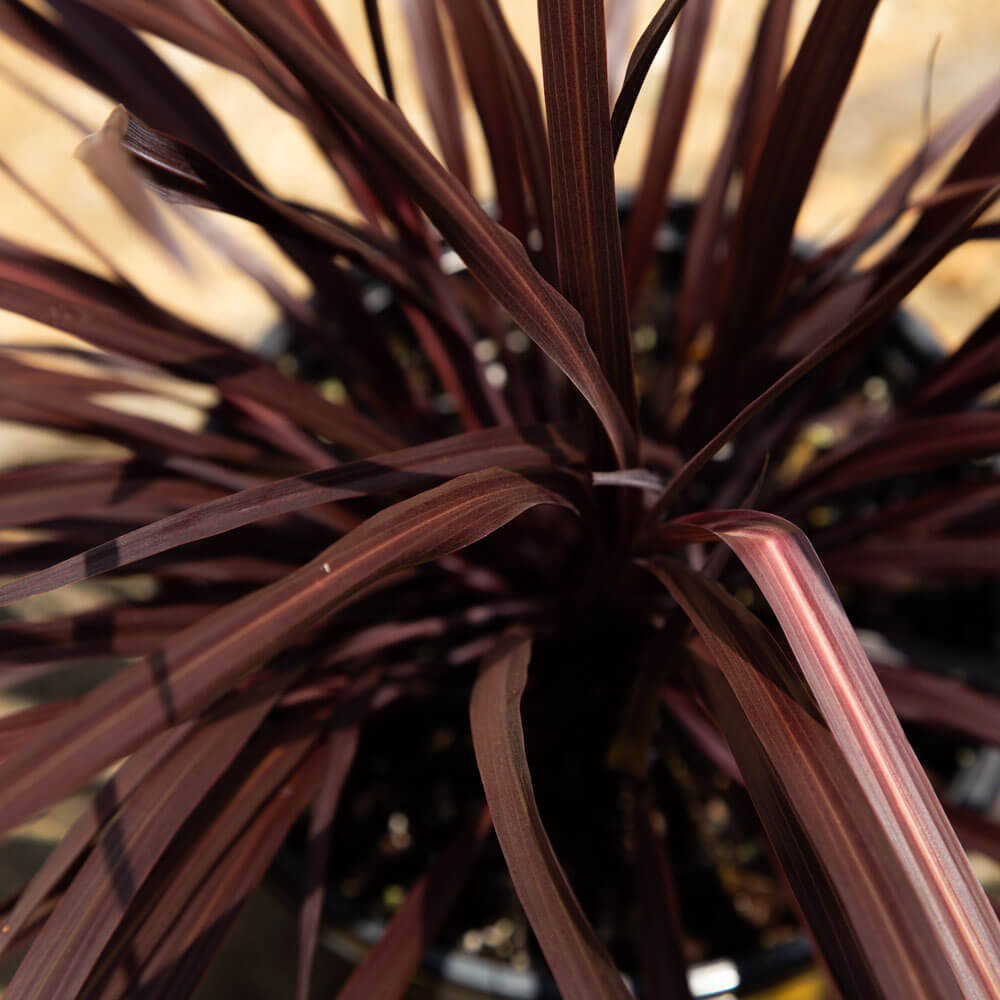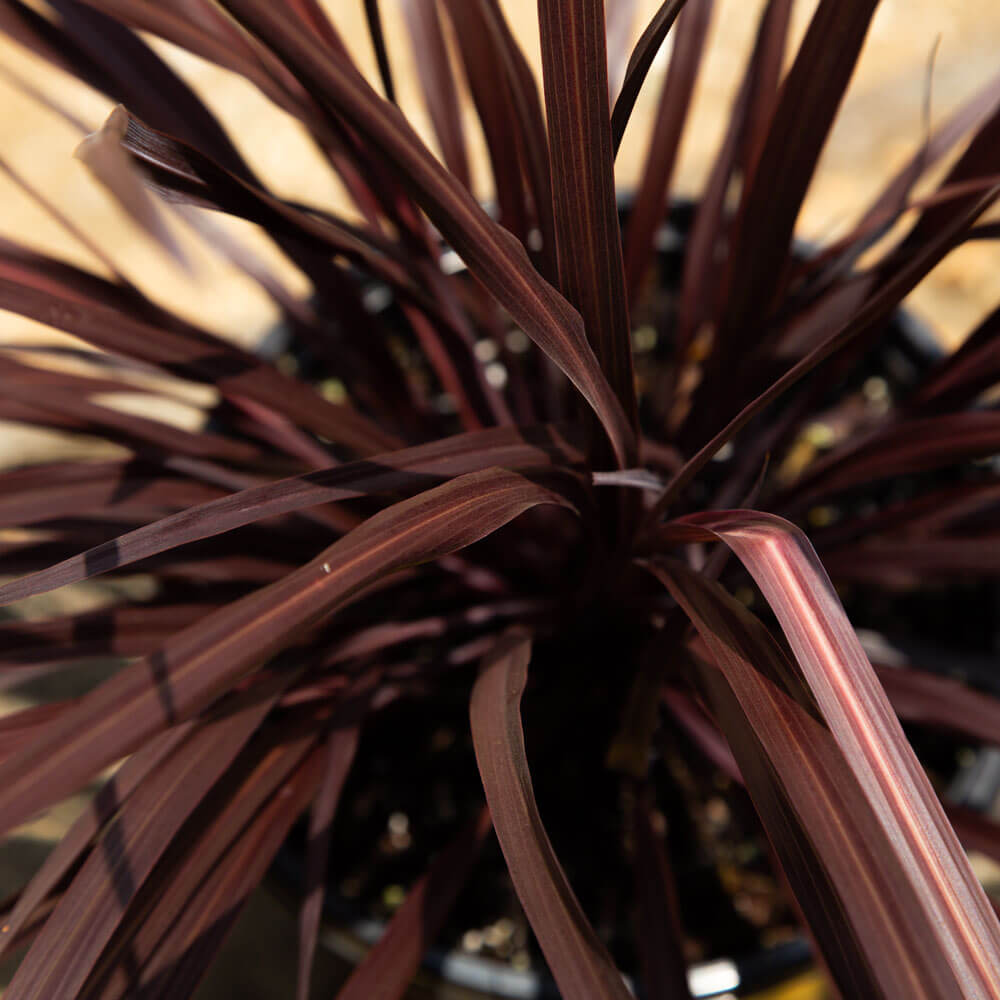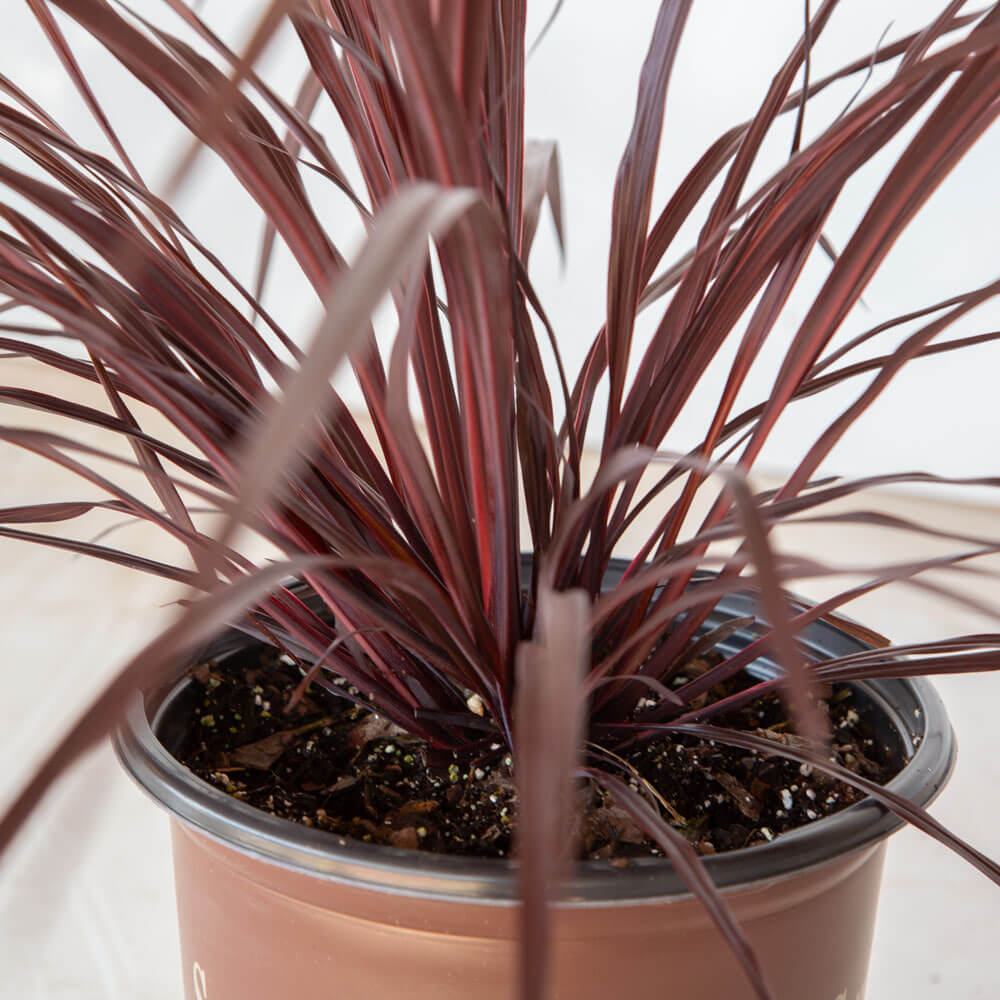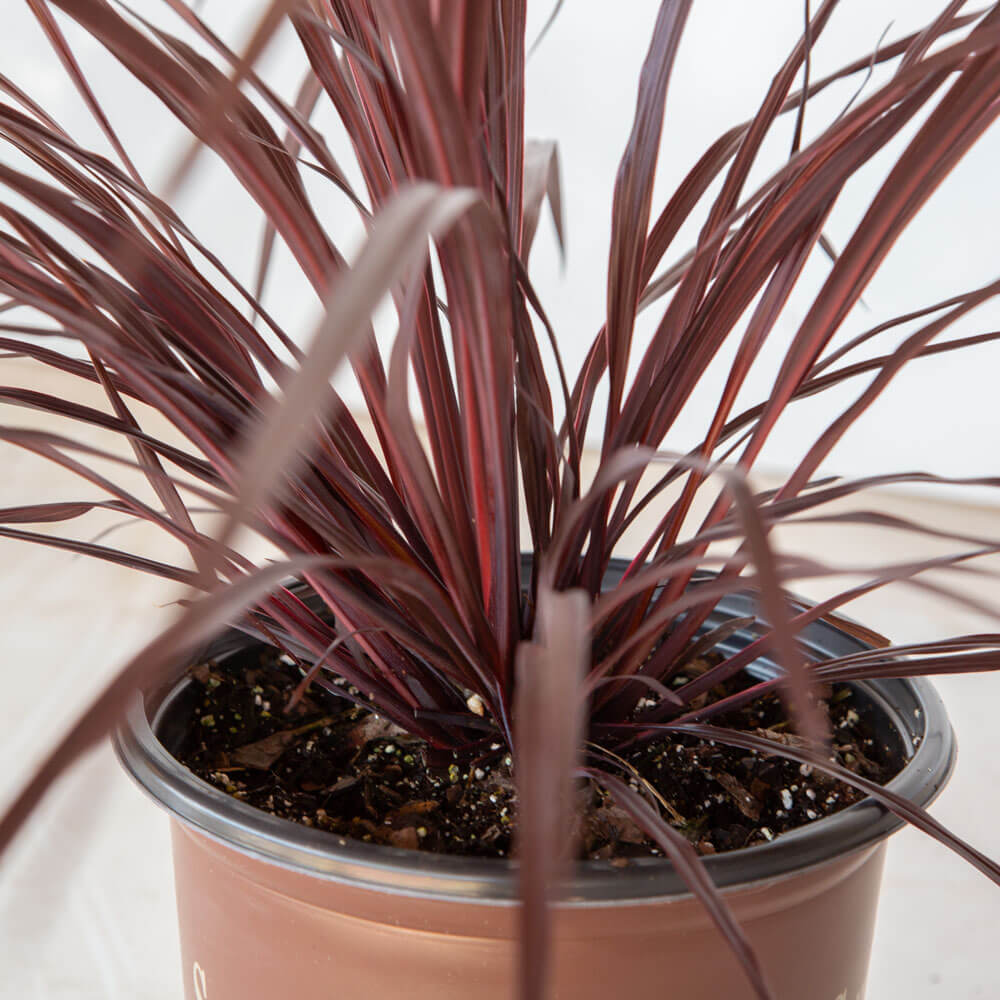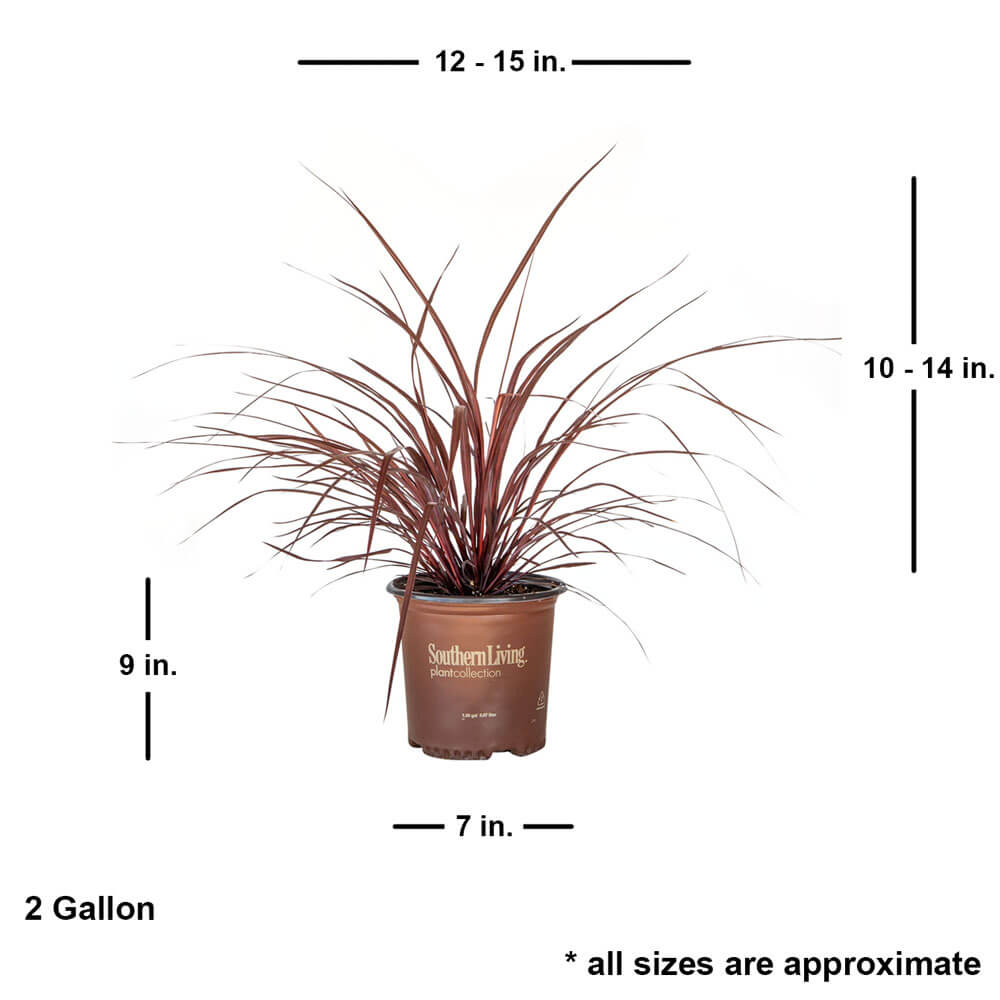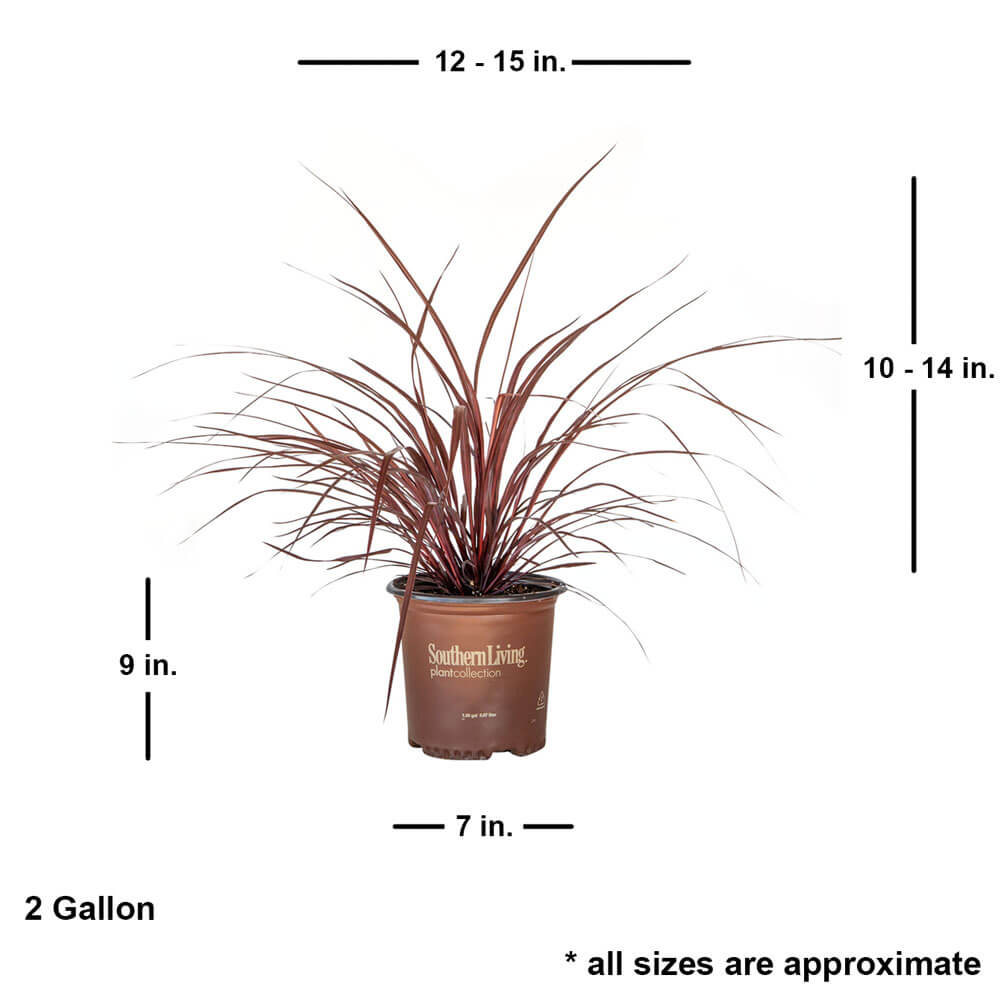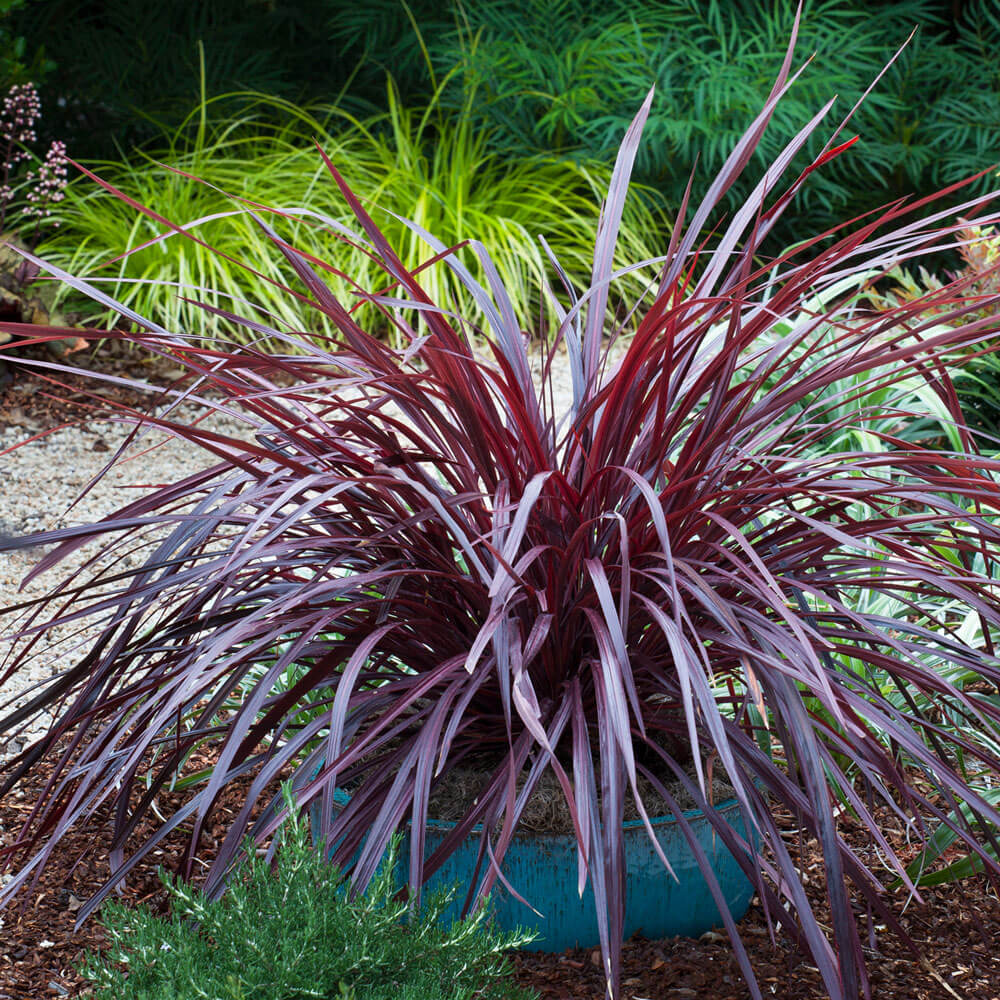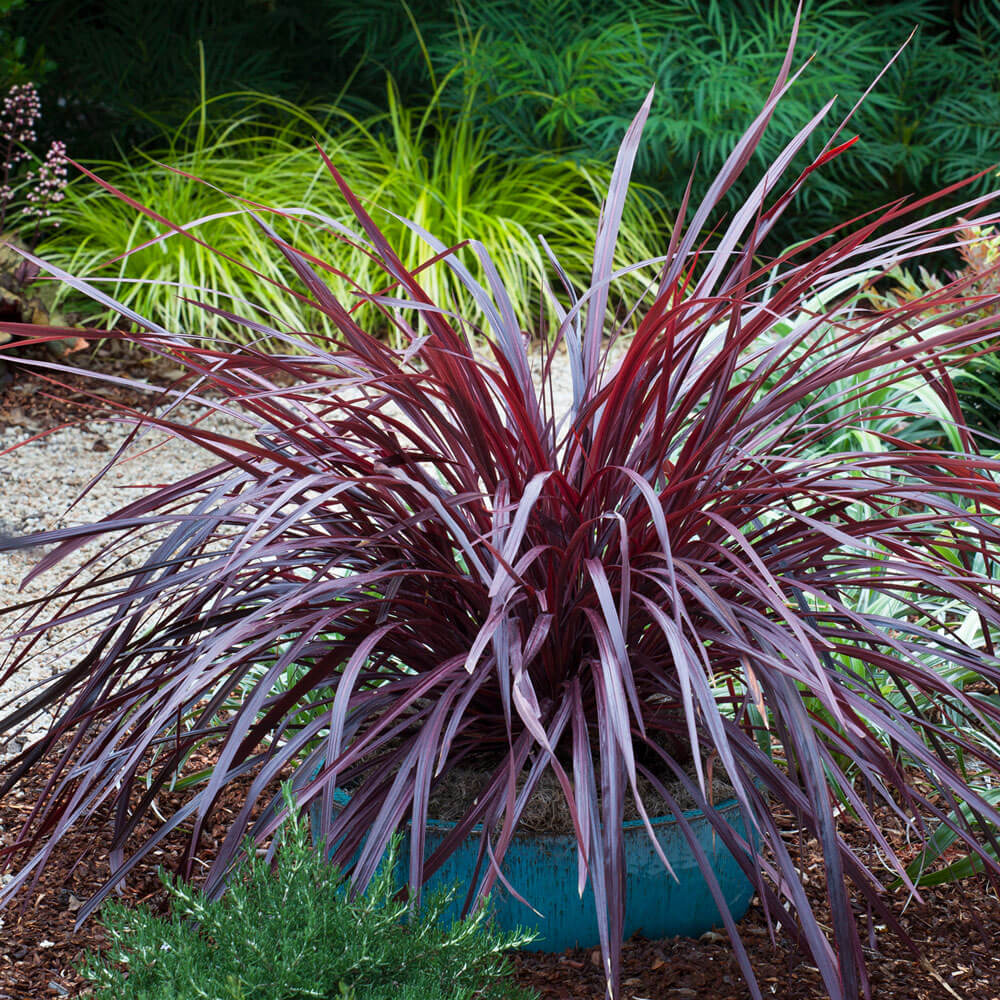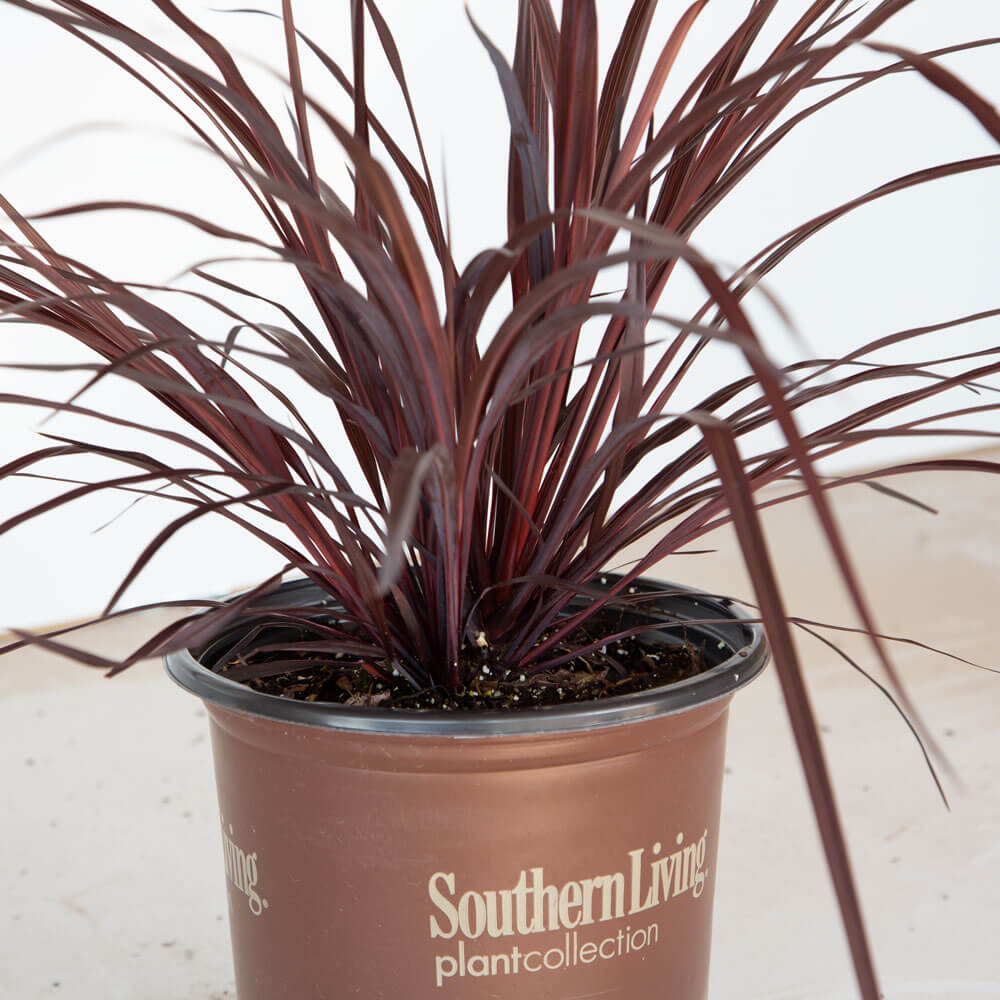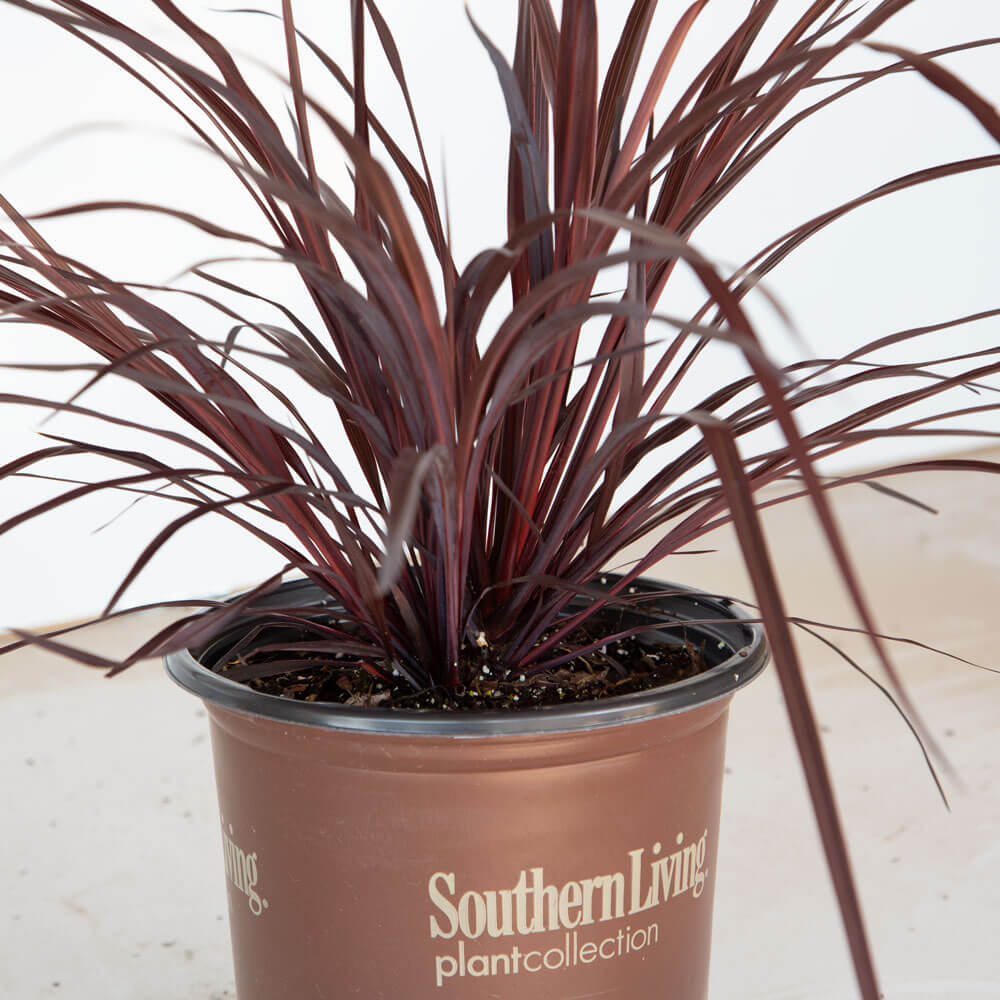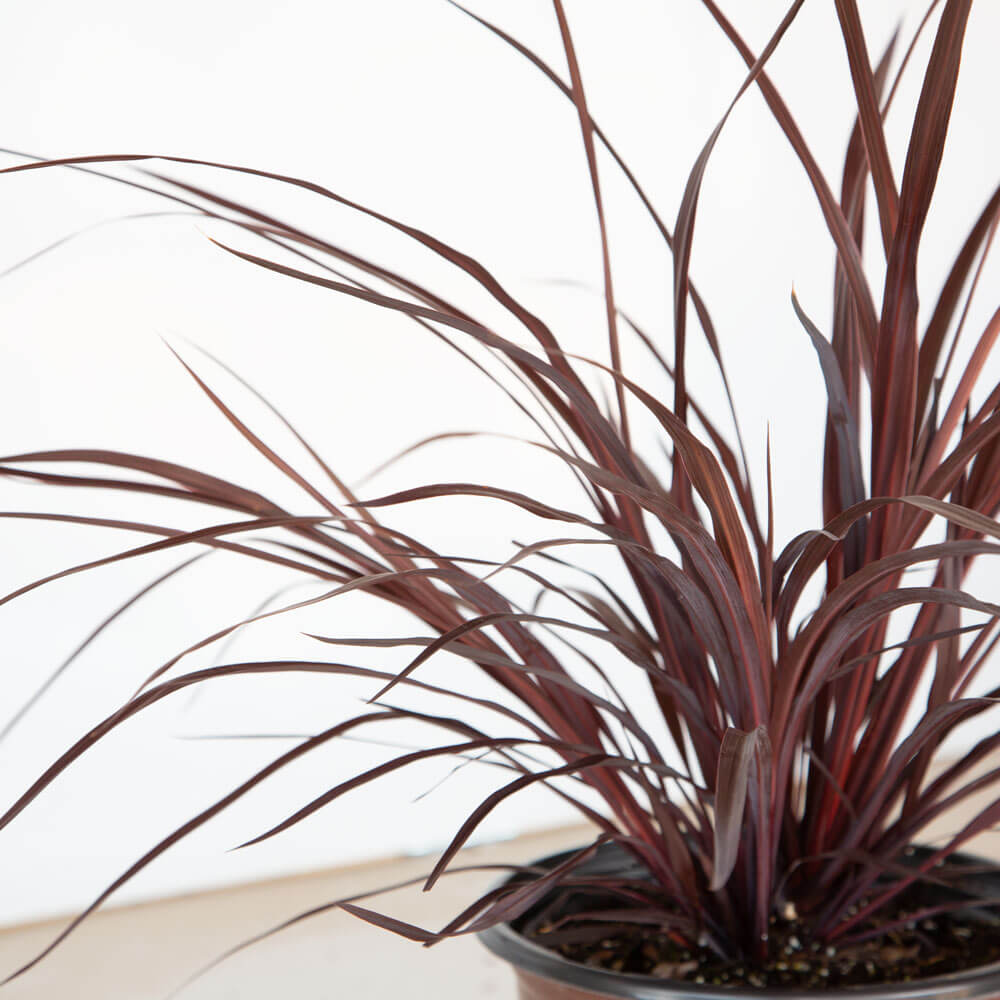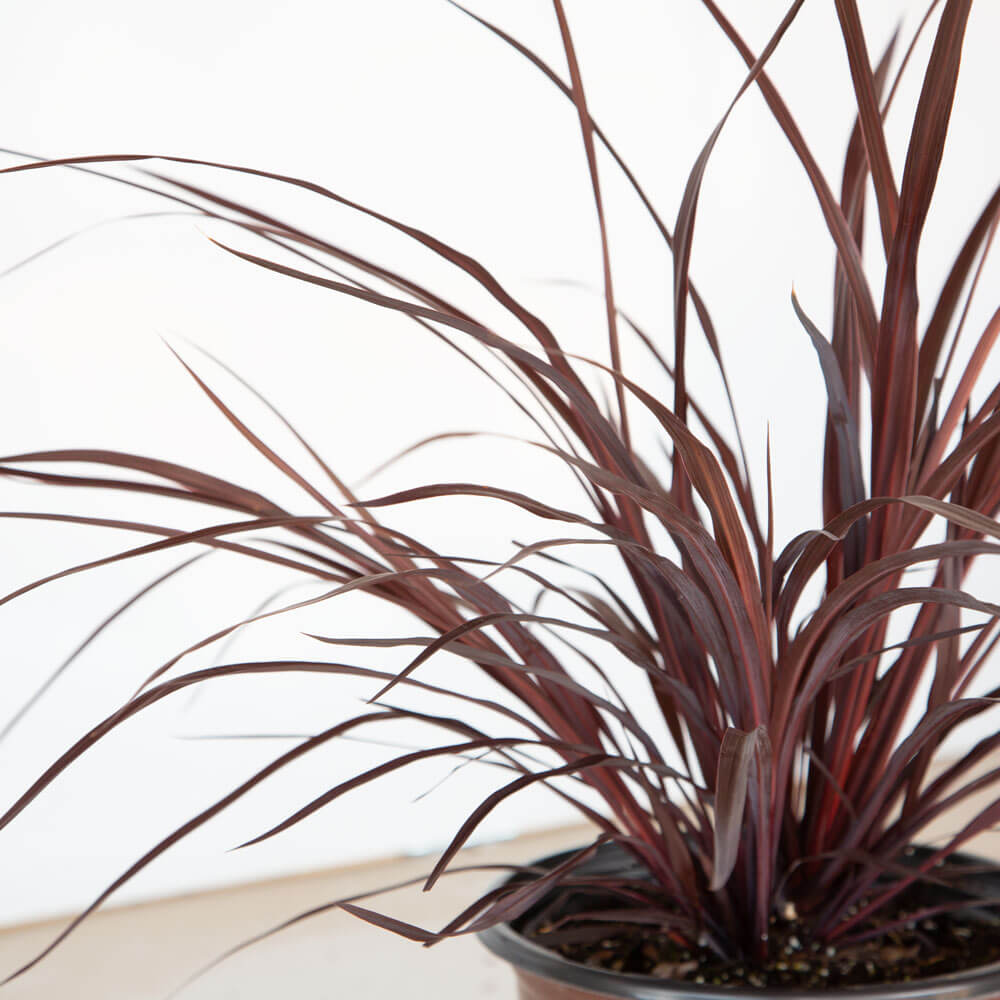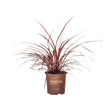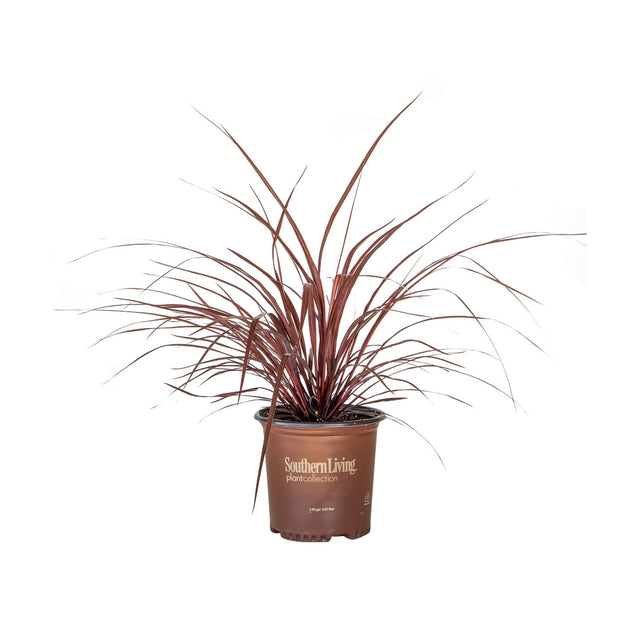Design-A-Line Cordyline
Design-A-Line Cordyline - 2.5 Quart is backordered and will ship as soon as it is back in stock.
Description
Description
The Design-A-Line™ Cordyline was featured by Southern Living Magazine as the Plant of the Month during June 2019! It earned its acclaim with elegant, long blades of burgundy red foliage. The leaves grow upright toward the center, while foliage at the edge arches downwards. Therefore, it has a naturally rounded, clumping appearance. Use this evergreen to create dynamic texture in your landscape with its curved, cascading foliage all year long.
Although traditionally prized for its foliage, this plant also features petite white flowers in Summer. These blossoms contrast nicely with the foliage and create a new element of interest for your landscape.
This is a naturally low-maintenance plant that requires very little supplementary care once settled into the landscape. Pruning is unnecessary, however, old foliage can be trimmed back in Spring.
The Design-A-Line Cordyline is a dwarf variety and grows to 3'H x 3' W.
Use this variety in a showy ceramic container, along pathways, or in a mixed garden bed. It's certain to provide a unique flair wherever you choose to plant it!
Design-A-Line Cordyline Care
Hardy from USDA Zones 8-11, and down to 10°F once fully established in the landscape.
Plant in Part Sun to Partial Shade for best results.
Water 2-3 times per week during the first growing season to help establish deep roots. However, make sure that the soil is allowed to dry between waterings.
Plant in average garden soil with good drainage to help ensure long-term success.
Fertilize with a balanced, slow-release fertilizer in early spring for optimal growth and plant health.
Care & Use
Care & Use
Spacing Recommendations
Spacing Recommendations
-
Scientific Name
-
Hardiness Zone8, 9, 10, 11
-
Sun ExposurePart Sun to Part Shade
-
Evergreen or DeciduousEvergreen
-
FeaturesDeer Resistant, Disease Tolerant, Dwarf
-
Feature ColorGreen
-
UsesAccent, Container, Mass Planting
-
Water NeedsMedium
-
Bloom Season-
Growing Zones : 8, 9, 10, and 11

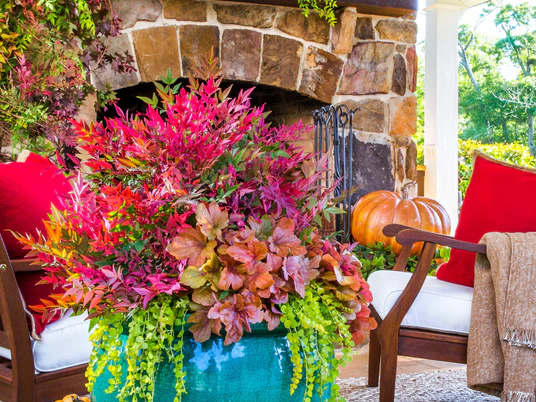
Southern Living Plants
